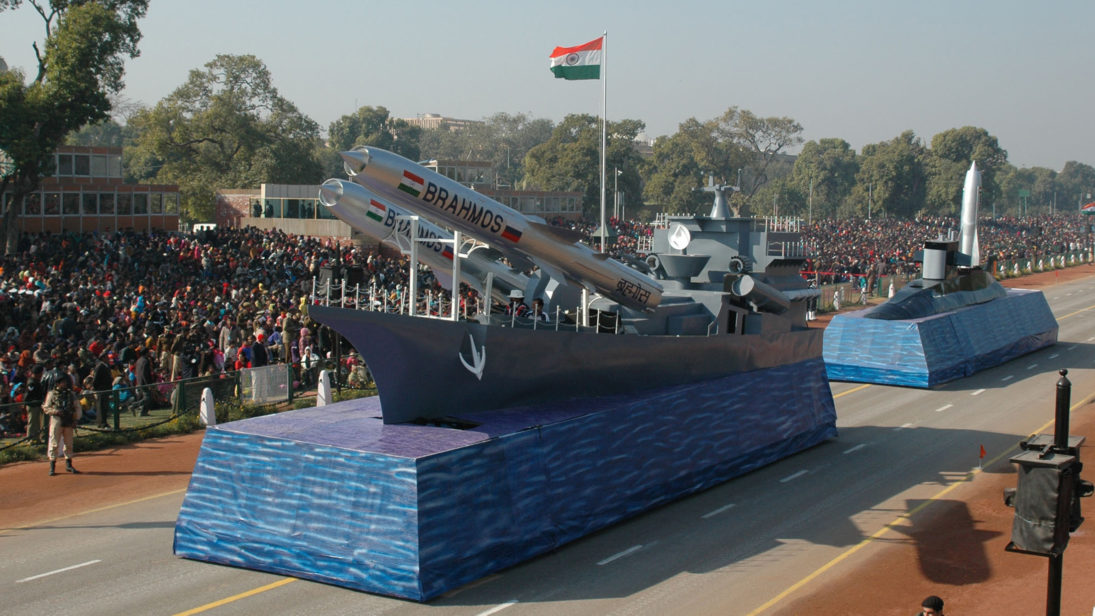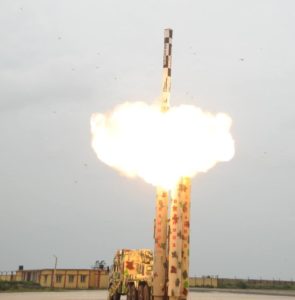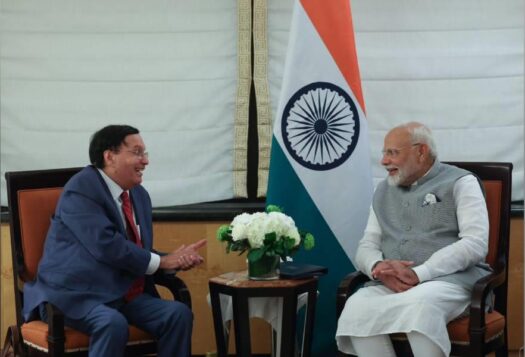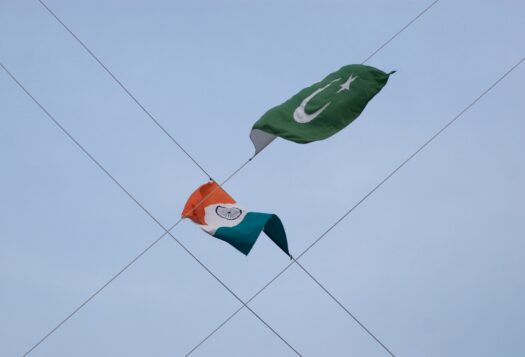
This summer, India somewhat successfully tested a weaponizable Hypersonic Technology Development Vehicle (HSTDV) off its eastern coast in the presence of Defense Minister Rajnath Singh. Hypersonic weapons are the latest phenomenon in military technology: unlike traditional missiles, hypersonic missiles combine the speed of a ballistic missile at more than Mach 5—five times the speed of sound—with the low altitude and maneuverability of a cruise missile. There are currently no credible detectors and interceptors to successfully shoot down hypersonic missiles, so these weapons cannot be defended against.
The speed and unpredictability of these weapons threaten strategic stability among global powers. In addition to the much-hyped hypersonic competition between Russia, China, and the United States, concerns about arms race and first strike incentives from hypersonic weapons also echo in South Asia. Not only has India tested a HSTDV, but it is also developing a hypersonic missile, Brahmos II. While the fielding of such weapons may be years away, Indian hypersonic missiles would bring new challenges to the region by increasing Indian incentives for a decapitating first strike against Pakistan’s strategic forces, as well as pressuring Pakistan to respond with its own proliferation.
India’s Development of Hypersonic Weapons
India is currently developing a hypersonic version of its anti-ship/land-attack Brahmos supersonic cruise missile. A joint venture between Russia and India, Brahmos has a maximum speed of Mach 2.8. The hypersonic version of Brahmos will be known as Brahmos II, which will have a speed of more than Mach 5 and will be powered by a supersonic combustion ramjet, or “scramjet,” engine. Unlike a ramjet engine, a scramjet engine uses oxygen from the atmosphere rather than an onboard tank, which makes the missile lighter and faster.
However, the development of Brahmos II has been slow as it has encountered a number of setbacks over the years, and the cruise missile has yet to be tested. In 2009 the hypersonic version of Brahmos was projected to be ready by 2013. However, in 2018—almost a decade later—the chief executive of Brahmos Aerospace, Sudhir Mishra, suggested that it would take an additional “seven to ten years” for Brahmos to reach hypersonic speeds. Some commentators have remarked that Brahmos’ hypersonic version may never be realized owing to the numerous delays. However, even if India shelves the plan of developing its own hypersonic Brahmos, the lack of international controls over hypersonic proliferation could open the door for future purchases of hypersonic technologies from Russia.
Despite setbacks, India’s flight test of its hypersonic vehicle, the HSTDV, indicates that New Delhi is committed to developing hypersonic technologies.
Despite setbacks, India’s flight test of its hypersonic vehicle, the HSTDV, indicates that New Delhi is committed to developing hypersonic technologies. While India’s Defense Research and Development Organization (DRDO) claimed the test was successful, the launch platform—Agni-I—failed to take the HSTDV to the altitude necessary for the scramjet engine to operate. Regardless, the flight test is the first step towards the realization of an indigenous hypersonic vehicle and the successful development of Brahmos II, and the HSTDV could give India two separate hypersonic cruise missile systems.
India has three key motivations for developing such a sophisticated weapons system. First, India aspires to be a world power. This means being on par with the United States, Russia, and China in the realm of indigenous technological advancement—Indian Defense Minister Rajnath Singh has emphasized the importance of developing missiles indigenously. Second, India considers China an economic and political rival, and may feel the need to catch up to China’s emerging hypersonic capabilities. Third, hypersonic weapons could give India a strategic edge over Pakistan by complicating Pakistan’s ability to develop countermeasures. Finally, the domestic political and scientific communities in India also drive such ambitions. The above motivating factors intensify the push for developing this dangerous weapon system, which has the potential to create instability and uncertainty in a nuclear environment.

Hypersonic Weapons in South Asia’s Strategic Calculus
Hypersonic weapons pose a risk to strategic stability in South Asia. Indian and Pakistani nuclear warhead numbers are in the same range. India and Pakistan have both developed short-range ballistic missiles, Pakistan with the nuclear Nasr missile and India with the conventional but nuclear capable Prahaar missile. Both are developing multiple independently targetable re-entry vehicle (MIRV) technology. Indian acquisition of hypersonic weapons—combined with the strengthening of India’s intelligence, surveillance, and reconnaissance (ISR) capabilities, missile defense, and nuclear submarines—may tilt the strategic balance in India’s favor. In combination, these systems are a potent weapon for preemption. Thus, Pakistan may fear an Indian capacity for a first strike against its strategic assets. In the event of a crisis, Pakistan may preemptively launch its own weapons for fear of losing them to a decapitating Indian first strike. These fears are further augmented by the eroding credibility of India’s nuclear no-first-use policy.
The ambiguity that accompanies hypersonic weapons is an added threat to nuclear stability in South Asia. The speed of hypersonic weapons increases their kinetic kill-energy so that even conventionally-armed hypersonic weapons can cause enormous destruction. Thus, there is the potential for a successful counterforce first strike without even using a nuclear warhead. Before the missile reaches its target, it may be impossible to determine whether it is carrying a conventional or nuclear warhead. This ambiguity could risk a conventional attack being mistaken for a nuclear attack and cause the incident to escalate across the nuclear threshold.
The ambiguity that comes with hypersonic weapons is an added risk to nuclear stability in South Asia.
Another issue is the lack of controls over hypersonic weapon proliferation in South Asia. There is no international treaty or measure to limit such proliferation among the United States, China, and Russia because each of these countries are interested in acquiring these weapons. India has also rejected many bilateral arms control proposals offered by Pakistan, including a bilateral test ban agreement and a strategic restraint regime agreement. Indian hypersonic weapons would have serious consequences for Pakistan. Pakistan does not have a ballistic and cruise missile defense system, while India is strengthening its air and missile defenses. Therefore, Pakistan may eventually come under pressure to develop or obtain its own hypersonic weapons unless the global powers decide to stop the proliferation of such weapons, particularly in South Asia. Pakistan may also be forced to make doctrinal changes such as greater ambiguity in its nuclear use policy or operational changes such as enhancing the readiness of its nuclear weapons.
However, amid speculations that the United States, Russia, and China are edging towards arms racing, and as Cold War era arms control treaties are becoming irrelevant, the likelihood of initiatives to stop the proliferation of hypersonic technologies is low. The Intermediate-Range Nuclear Forces (INF) Treaty has died and New START may follow the same path. Unless third parties begin to take the proliferation of these weapons more seriously, hypersonic weapons have the potential to exacerbate escalatory dangers in South Asia.
***
Image 1: Public.Research.Org via Flickr
Image 2: DRDO via Facebook


